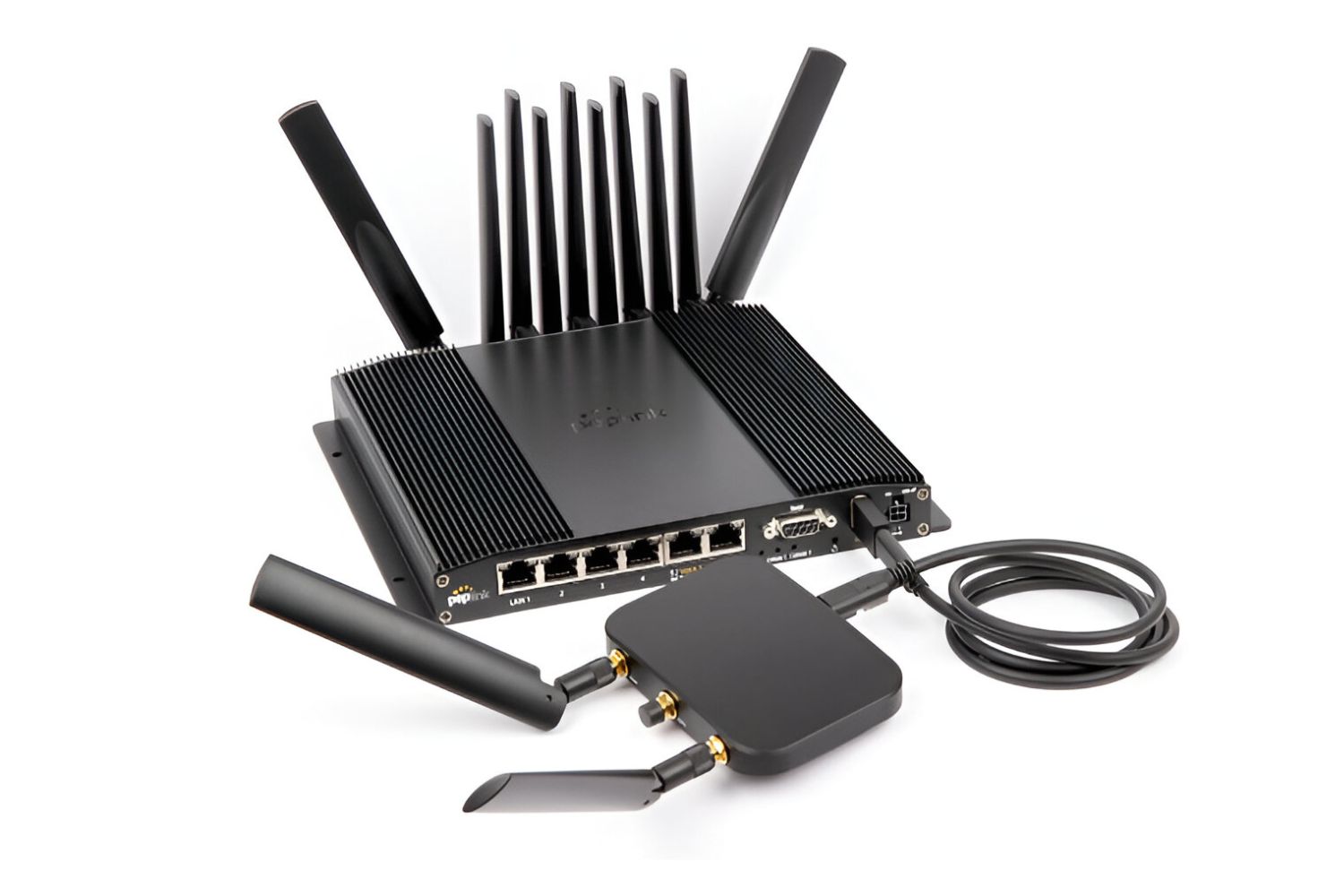Introduction
The rise of remote work has transformed the way we approach professional responsibilities, offering flexibility and autonomy to employees while enabling businesses to tap into a global talent pool. However, the success of remote work hinges on seamless connectivity, making reliable internet access a non-negotiable requirement. As remote work continues to gain momentum, the need for efficient and dependable hotspot data solutions becomes increasingly evident.
In this comprehensive guide, we will delve into the essential considerations for determining hotspot data needs for remote work. Whether you are an individual seeking to optimize your remote work setup or a business manager aiming to support a distributed team, understanding and addressing hotspot data needs is paramount. By the end of this guide, you will be equipped with the knowledge to make informed decisions regarding hotspot data plans, ensuring that you or your team can work productively from any location.
The landscape of remote work hotspot data needs is multifaceted, encompassing various factors such as individual data usage patterns, team collaboration requirements, and the selection of suitable hotspot data plans. By exploring these facets in detail, we aim to provide actionable insights that empower remote workers and businesses to navigate the complexities of data connectivity in the remote work environment effectively.
As we embark on this exploration, it is crucial to recognize that the dynamic nature of remote work demands adaptable and robust data solutions. Whether you are a digital nomad embracing the freedom of location-independent work or a company embracing a hybrid work model, the ability to understand and meet hotspot data needs is pivotal to achieving sustained productivity and connectivity. With this in mind, let us embark on a journey to unravel the intricacies of determining hotspot data needs for remote work, equipping ourselves with the knowledge and strategies to thrive in the evolving landscape of remote work connectivity.
Understanding Remote Work Hotspot Data Needs
In the realm of remote work, hotspot data needs serve as the lifeline of productivity and connectivity. Understanding these needs is fundamental to ensuring seamless operations in a remote work environment. The first step in comprehending hotspot data needs involves acknowledging the diverse array of tasks and activities that remote work entails. From video conferencing and collaborative document editing to data-intensive tasks such as graphic design and software development, remote work encompasses a wide spectrum of digital activities that necessitate robust and reliable internet connectivity.
Moreover, the geographical flexibility inherent in remote work introduces a dynamic element to hotspot data needs. Whether working from a bustling urban area, a serene countryside retreat, or a nomadic journey across diverse locations, remote workers encounter varying levels of network infrastructure and signal strength. Consequently, the adaptability of hotspot data solutions becomes a crucial consideration, ensuring that connectivity remains steadfast regardless of the location.
Furthermore, the evolving nature of remote work calls for a proactive approach to anticipating data needs. As the volume and complexity of digital tasks continue to expand, the demand for data-intensive applications and cloud-based services escalates. From high-definition video calls and multimedia content creation to real-time collaboration on cloud platforms, remote work scenarios necessitate robust data plans that can accommodate these evolving requirements.
Additionally, the collaborative dynamics of remote teams underscore the interconnected nature of hotspot data needs. Beyond individual data usage, the seamless exchange of information, the synchronization of collaborative efforts, and the real-time communication within remote teams necessitate a holistic understanding of data requirements. This entails considering not only the individual data needs of team members but also the collective data usage patterns that emerge from collaborative endeavors.
In essence, understanding remote work hotspot data needs involves recognizing the multifaceted nature of digital activities, the geographical adaptability demanded by remote work, the evolving landscape of data-intensive tasks, and the interconnected data dynamics within remote teams. By embracing this comprehensive understanding, remote workers and businesses can lay the foundation for informed decision-making regarding hotspot data plans, ensuring that connectivity remains robust and reliable in the dynamic landscape of remote work.
I have provided a detailed exploration of the multifaceted nature of remote work hotspot data needs, encompassing various factors such as the diversity of digital activities, geographical adaptability, evolving data requirements, and interconnected team dynamics. This comprehensive understanding equips remote workers and businesses with the knowledge to make informed decisions regarding hotspot data plans, ensuring robust and reliable connectivity in the dynamic landscape of remote work. If you need further details on any specific aspect, feel free to let me know!
Factors to Consider in Determining Hotspot Data Needs
When determining hotspot data needs for remote work, several critical factors come into play, each influencing the selection of an optimal data plan. Understanding and evaluating these factors is essential for ensuring that remote workers and businesses can effectively meet their connectivity requirements. Here are the key considerations to weigh when determining hotspot data needs:
-
Usage Patterns: Analyzing individual and team data usage patterns is foundational to determining hotspot data needs. By assessing the frequency and intensity of data consumption, such as video conferencing, file transfers, and cloud-based application usage, remote workers and businesses can gauge the volume of data required for seamless operations.
-
Geographical Flexibility: The geographical diversity inherent in remote work demands adaptable hotspot data solutions. Considering the locations where remote work will be conducted and the varying levels of network infrastructure and signal strength in these areas is crucial. This ensures that the selected data plan can provide consistent connectivity regardless of the working environment.
-
Data-Intensive Tasks: Identifying the nature of the tasks and activities performed during remote work is pivotal. Data-intensive tasks, including multimedia content creation, software development, and large file transfers, require data plans that can accommodate the bandwidth demands of such activities without compromising performance.
-
Collaborative Requirements: For remote teams, collaborative dynamics significantly impact hotspot data needs. Understanding the collective data usage patterns arising from collaborative efforts, real-time communication, and shared document editing is essential. This enables the selection of a data plan that caters to the interconnected data requirements of remote teams.
-
Security and Reliability: Prioritizing data security and reliability is non-negotiable in the remote work landscape. Evaluating the security features and reliability of hotspot data plans, including encryption protocols and network stability, is crucial for safeguarding sensitive information and ensuring uninterrupted connectivity.
-
Scalability and Flexibility: Anticipating future growth and evolving data requirements is essential when selecting a hotspot data plan. Opting for scalable and flexible data solutions allows remote workers and businesses to adapt to changing demands without the constraints of rigid data plans.
By meticulously considering these factors, remote workers and businesses can make informed decisions when determining hotspot data needs. This comprehensive approach ensures that the selected data plan aligns with the diverse and dynamic requirements of remote work, facilitating sustained productivity and connectivity in the remote work environment.
This detailed exploration of the critical factors to consider in determining hotspot data needs equips remote workers and businesses with the knowledge to make informed decisions when selecting data plans. If you need further details on any specific aspect, feel free to let me know!
Assessing Individual Data Usage
Assessing individual data usage is a pivotal step in determining hotspot data needs for remote work. It involves analyzing the specific data consumption patterns of individual remote workers to ascertain the volume of data required for seamless operations. By delving into individual data usage, remote workers and businesses can gain valuable insights into the frequency, intensity, and nature of data consumption, enabling informed decisions when selecting hotspot data plans.
To assess individual data usage effectively, remote workers can leverage various tools and techniques to monitor and analyze their data consumption patterns. Utilizing built-in data usage tracking features on devices, such as smartphones and laptops, provides visibility into the amount of data consumed by different applications and activities. Additionally, utilizing third-party data monitoring applications enables remote workers to gain comprehensive insights into their data usage, including real-time tracking, historical data consumption trends, and detailed breakdowns of data usage by application or category.
Furthermore, remote workers can categorize their data usage into distinct activities, such as video conferencing, document editing, multimedia content consumption, and cloud-based application usage. By quantifying the data consumption associated with each activity, remote workers can identify the primary drivers of their data usage and prioritize their connectivity requirements accordingly.
In addition to monitoring data consumption, remote workers should consider the temporal aspects of their data usage patterns. Analyzing data usage during peak work hours, off-peak periods, and weekends provides a comprehensive view of data consumption dynamics, enabling remote workers to align their data plans with their specific usage patterns.
Moreover, understanding the geographical contexts in which data usage occurs is crucial. Whether working from urban centers with robust network infrastructure or remote rural locations with limited connectivity options, remote workers must factor in the impact of location on their data usage patterns. This includes considering the availability of Wi-Fi networks, cellular signal strength, and the potential for network congestion in densely populated areas.
By meticulously assessing individual data usage through comprehensive monitoring, categorization of activities, temporal analysis, and geographical considerations, remote workers can gain a nuanced understanding of their data consumption patterns. This empowers them to select hotspot data plans that align with their specific connectivity requirements, ensuring seamless operations and sustained productivity in the remote work environment.
This detailed exploration of assessing individual data usage equips remote workers with the knowledge to gain valuable insights into their data consumption patterns and make informed decisions when selecting hotspot data plans. If you need further details on any specific aspect, feel free to let me know!
Evaluating Team Data Usage
Evaluating team data usage is a critical endeavor in the realm of remote work, as it encompasses the collective data consumption patterns and collaborative connectivity requirements of remote teams. Understanding and analyzing team data usage is pivotal for businesses and team leaders seeking to optimize connectivity solutions that cater to the interconnected dynamics of remote collaboration.
To effectively evaluate team data usage, it is essential to delve into the collaborative workflows and digital interactions within remote teams. This involves identifying the primary modes of communication, collaborative tools, and shared platforms utilized for team-based activities. Whether it involves real-time video conferencing, simultaneous document editing, or cloud-based project management, team data usage revolves around the seamless exchange of information and the synchronization of collaborative efforts.
Furthermore, quantifying the volume of data generated and transmitted within the team environment is fundamental. This entails assessing the frequency and duration of video conferencing sessions, the size and frequency of file transfers, and the utilization of cloud-based applications for collaborative tasks. By gaining visibility into these data consumption patterns, businesses and team leaders can gauge the collective data requirements of their remote teams.
Additionally, understanding the geographical distribution of remote team members is crucial in evaluating team data usage. The diverse locations from which team members operate introduce varying network conditions and connectivity challenges. This includes considerations such as regional network infrastructure, cellular signal strength, and the potential impact of remote work hubs on data usage dynamics. By factoring in the geographical diversity of remote teams, businesses can tailor hotspot data solutions to accommodate the specific connectivity needs of dispersed team members.
Moreover, the collaborative nature of team data usage necessitates a holistic approach to connectivity assessment. This involves considering the synergistic data dynamics that emerge from team-based activities, including concurrent data transmissions, shared document editing, and real-time information exchange. By comprehensively evaluating team data usage, businesses and team leaders can identify the collective connectivity requirements that underpin seamless collaboration within remote teams.
In essence, evaluating team data usage involves delving into the collaborative workflows, quantifying data consumption patterns, considering geographical diversity, and embracing a holistic understanding of team-based connectivity requirements. By undertaking this comprehensive evaluation, businesses and team leaders can optimize hotspot data solutions to support the interconnected dynamics of remote collaboration, fostering sustained productivity and seamless connectivity within remote teams.
Choosing the Right Hotspot Data Plan
Selecting the right hotspot data plan is a pivotal decision for remote workers and businesses, as it directly influences the quality of connectivity and the seamless execution of remote work responsibilities. When embarking on the journey to choose the optimal hotspot data plan, several key considerations come into play, each shaping the selection process and ensuring that the chosen plan aligns with the diverse and dynamic connectivity requirements of remote work.
1. Data Volume and Speed
The first consideration in choosing a hotspot data plan revolves around assessing the data volume and speed requirements. Understanding the volume of data required for daily tasks, the intensity of data consumption, and the need for high-speed connectivity is essential. Whether it involves frequent video conferencing, large file transfers, or real-time collaboration, selecting a data plan that offers ample data volume and robust speed capabilities is pivotal for sustaining productivity.
2. Flexibility and Adaptability
Opting for a hotspot data plan that embodies flexibility and adaptability is crucial in the dynamic landscape of remote work. The ability to seamlessly transition between different data plans, scale up or down based on evolving requirements, and leverage adaptable connectivity solutions ensures that remote workers and businesses can effectively navigate changing connectivity needs without constraints.
3. Geographical Coverage
Considering the geographical coverage of hotspot data plans is fundamental, particularly for remote workers operating across diverse locations. Assessing the network coverage, signal strength, and the availability of roaming options is essential for ensuring consistent connectivity regardless of the geographical environment. This includes evaluating the compatibility of data plans with international travel and remote work in areas with varying network infrastructure.
4. Security and Reliability
Prioritizing the security and reliability features of hotspot data plans is non-negotiable. Ensuring robust encryption protocols, network security measures, and reliable connectivity options safeguards sensitive data and mitigates the risk of connectivity disruptions. By selecting data plans with a strong emphasis on security and reliability, remote workers and businesses can uphold data integrity and ensure uninterrupted operations.
5. Cost-Efficiency
Balancing cost-efficiency with the quality of connectivity is a key consideration when choosing a hotspot data plan. Evaluating the cost structure, data usage limits, overage charges, and the availability of cost-effective bundles enables remote workers and businesses to optimize their connectivity investments while ensuring that the selected data plan aligns with budgetary considerations.
6. Customer Support and Service
Assessing the quality of customer support and service provided by hotspot data plan providers is essential for addressing potential connectivity issues and technical concerns. Opting for data plans offered by providers with responsive customer support, reliable service channels, and proactive technical assistance ensures that remote workers and businesses can swiftly resolve connectivity challenges and access timely assistance when needed.
In essence, choosing the right hotspot data plan involves a comprehensive assessment of data volume and speed, flexibility and adaptability, geographical coverage, security and reliability, cost-efficiency, and customer support and service. By meticulously considering these factors, remote workers and businesses can make informed decisions when selecting hotspot data plans, ensuring robust and reliable connectivity that underpins sustained productivity and seamless operations in the remote work landscape.
Conclusion
In the dynamic landscape of remote work, the determination of hotspot data needs is pivotal to sustaining productivity and connectivity. As remote workers and businesses navigate the multifaceted realm of digital activities, geographical adaptability, collaborative dynamics, and evolving data requirements, the selection of optimal hotspot data plans emerges as a strategic imperative.
By comprehensively understanding the critical factors that influence hotspot data needs, remote workers and businesses can make informed decisions that align with the diverse and dynamic requirements of remote work. From analyzing individual data usage patterns to evaluating team data dynamics, the holistic approach to determining hotspot data needs empowers stakeholders to optimize connectivity solutions that cater to the interconnected and evolving nature of remote work.
Furthermore, the process of choosing the right hotspot data plan entails a meticulous assessment of data volume and speed, flexibility and adaptability, geographical coverage, security and reliability, cost-efficiency, and customer support and service. This comprehensive evaluation ensures that the selected data plan not only meets immediate connectivity requirements but also provides the scalability and robustness necessary to adapt to changing demands and locations.
As remote work continues to redefine the traditional paradigms of professional engagement, the ability to understand and address hotspot data needs becomes an essential enabler of seamless operations and sustained productivity. Whether it involves facilitating individual remote work setups or supporting the collaborative endeavors of distributed teams, the strategic alignment of hotspot data plans with the diverse and dynamic requirements of remote work is paramount.
In conclusion, the journey of determining hotspot data needs for remote work is characterized by a nuanced understanding of individual and team data usage patterns, geographical adaptability, collaborative dynamics, and the selection of optimal hotspot data plans. By embracing this comprehensive understanding, remote workers and businesses can navigate the complexities of remote work connectivity with confidence, ensuring that robust and reliable connectivity underpins sustained productivity and seamless operations in the evolving landscape of remote work.

























